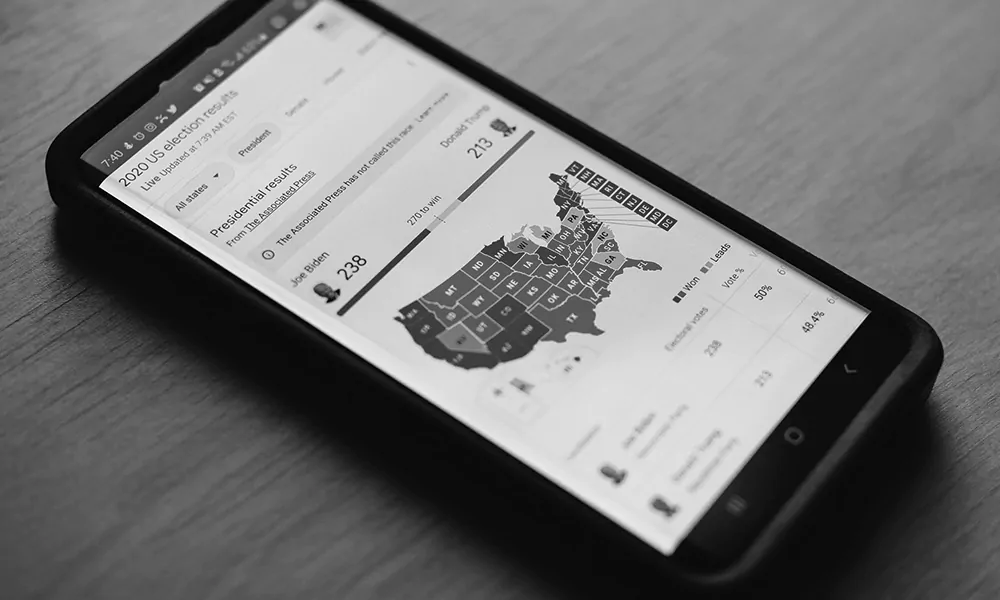Democracy 2.0: Digital Voting and Cyber Security

Are you interested in the future of voting and cybersecurity? Here’s a rundown of the essentials to know:
What are the types of digital voting systems, and how accessible are they?
- Mobile and online voting offer convenient options but must prioritize security and accessibility for all voters.
How can blockchain technology provide transparency and tamper-proof protection?
- Using this technology can ensure confidential voter data is protected and the voting process is secure.
What can we learn from global experiences with digital voting?
- Past experiences like Switzerland or the United States provide insight into the potential benefits and risks of implementing digital voting systems.
What are the challenges facing digital voting, and how can we address them?
- Cybersecurity remains a significant concern, and we must ensure the integrity of the voting process while prioritizing accessibility and inclusivity.
Keep Scrolling to Uncover More

The Era of Digital Voting: A Brave New World for Elections
Digital voting has the potential to revolutionize the way we participate in our democracy. The benefits of digital voting are clear, but with every new frontier comes new challenges. Digital voting is not without its risks, and those risks must be managed. With careful navigation and technological innovation, democracy could be headed toward a bright new world.
Cybersecurity: Protecting the Heart of Digital Democracy
In this digital age, cybersecurity is more important than ever. When it comes to digital voting, it’s essential to protect our democratic process from potential cyber-attacks. With cybercriminals getting smarter every day, safeguarding the privacy of voters and respecting their democratic rights is crucial. From encrypted voting systems to advanced authentication processes, our democracy must be protected by the latest and greatest in cybersecurity.

Challenges of Digital Voting: Navigating the Minefield of Potential Risks
Digital voting is an exciting frontier, but it’s not without its challenges. From cybersecurity risks to logistical challenges, navigating the minefield of potential issues can feel overwhelming. The risks can be significant: hacking, data breaches, cyber-attacks, and many more. Mitigating these risks involves being proactive, vigilant, and staying ahead of potential threats through proper planning and cyber safeguards.
With the right approach, we could navigate the potential minefield of risks smoothly and ensure Democracy 2.0 is a roaring success.
From Mobile to Online: Types of Digital Voting Systems and Their Accessibility
Online and mobile voting are popular methods for voting from anywhere at any time. Voters can cast ballots from devices like computers, tablets, or phones. These digital systems make voting more accessible, convenient, and secure. They empower voters to participate without hassle.
Mobile voting allows voters to submit ballots from their phones easily, without worries about physical voting booths or faulty machines.
Accessibility is key to ensuring all voters can participate, including those with disabilities, remote communities, and people unable to go in-person. Digital voting helps by making the process simpler and more user-friendly for everyone. As technology advances, it’s vital that digital systems accommodate all voters.
Blockchain and Tamper-Proof Voting: A New Era of Transparency?
Blockchain technology is the digital wizardry that powers modern voting systems, and it has the potential to revolutionize the way we vote. One of the primary benefits of blockchain technology is its transparency. In a blockchain-based voting system, every vote is recorded in a public ledger, creating a permanent, tamper-proof record of the election. This transparency ensures that the results of the election are verifiable and trustworthy. Blockchain is the magic that can make digital voting accessible and safe for everyone!
Tamper-Proof Voting: Ensuring Election Integrity and Fairness
Tamper-proof voting is the ultimate solution to ensuring election integrity and fairness. Tamper-proof voting systems rely on cryptography, which means that the security and validity of each vote are guaranteed through rigorous mathematical equations. This cryptographic process ensures that a vote cannot be changed, altered, or deleted without detection, increasing public trust in the voting process. Tamper-proof voting is like a superhero protecting the sanctity of democracy – making sure that the voice of the people is heard and respected!


Lessons from Around the World: Global Experiences with Digital Voting
Digital voting systems around the world have had mixed results. Some nations like Estonia have developed effective systems that boost access and make counting quick. Switzerland also has a system that folks have used since 2003. However, India and Brazil faced big issues with security, fairness, and reliability.
There’s no one-size-fits-all answer for digital voting. Each country has different challenges and wins. In the U.S., e-voting machines in 2000 led to legal disputes. In contrast, Estonia’s system boosts access and makes counting easier. Overall, every nation needs a tailored approach to its situation.
Cybersecurity and Foreign Interference: Lessons from Russia
Russia’s impact on other countries’ elections cannot be overlooked. The country’s attempts to interfere in the 2016 US Presidential Election and the 2019 European Parliament elections highlight the importance of robust cybersecurity measures. The DNC hack, where Russian hackers infiltrated the computer network of the Democratic National Committee, is a glaring example of foreign interference in elections. As such, it is essential to prioritize cybersecurity measures to protect against foreign interference and uphold the democratic rights of every citizen.
Digital voting has the potential to revolutionize democracy in the 21st century, transforming the way we participate in the democratic process. With its promises of increased accessibility, efficiency, and engagement, digital voting systems open the door to broader electoral participation among voters of all backgrounds and abilities. By leveraging the power of technology and cybersecurity, we can overcome the challenges and safeguard the integrity of the democratic process.

Longing For Better Content?
No one belongs here more than you do.
Read thought-provoking articles that dissect everything from politics to societal norms. Explore critical perspectives on politics and the world around us.
Also, you can follow us on Instagram






